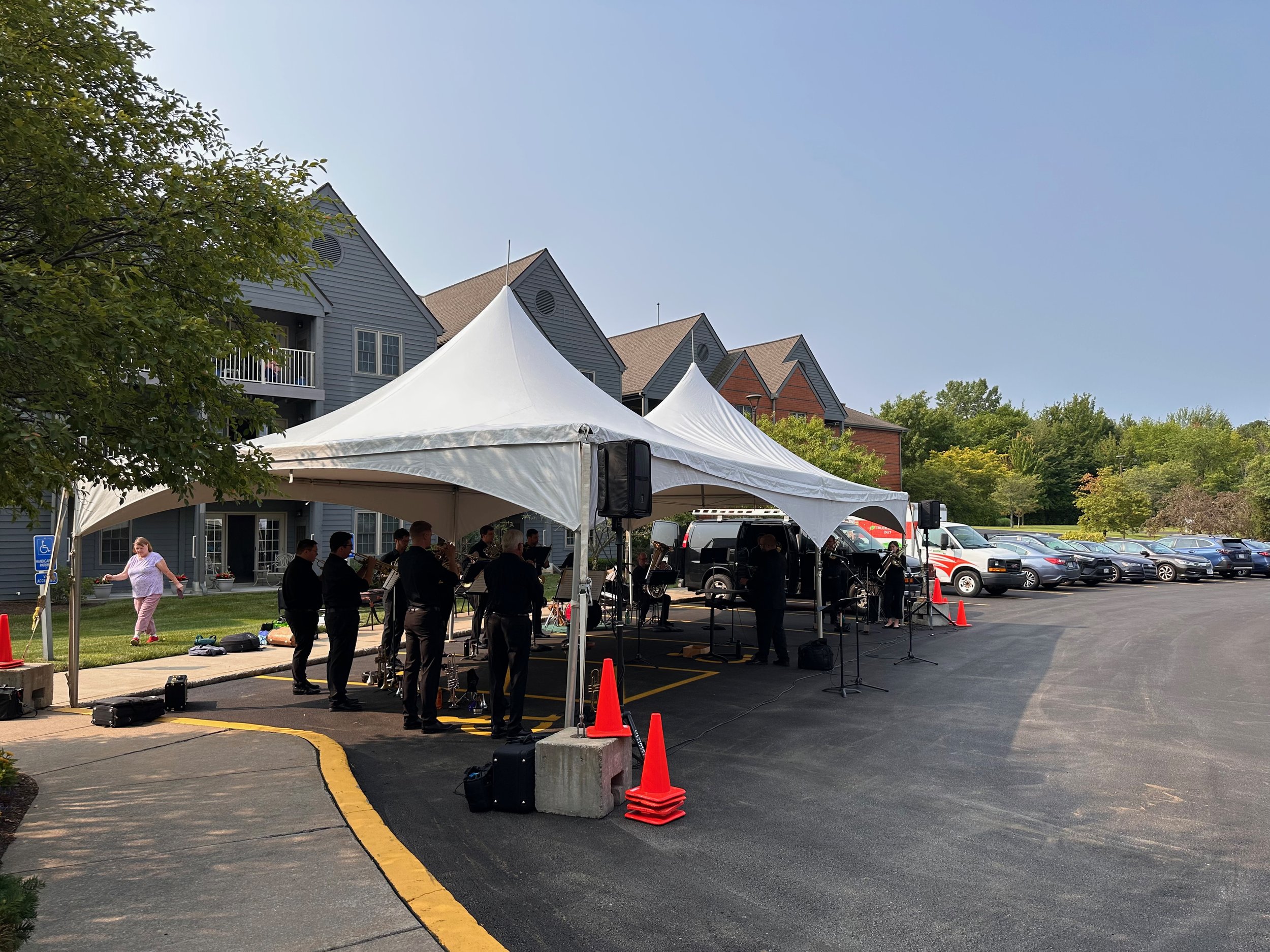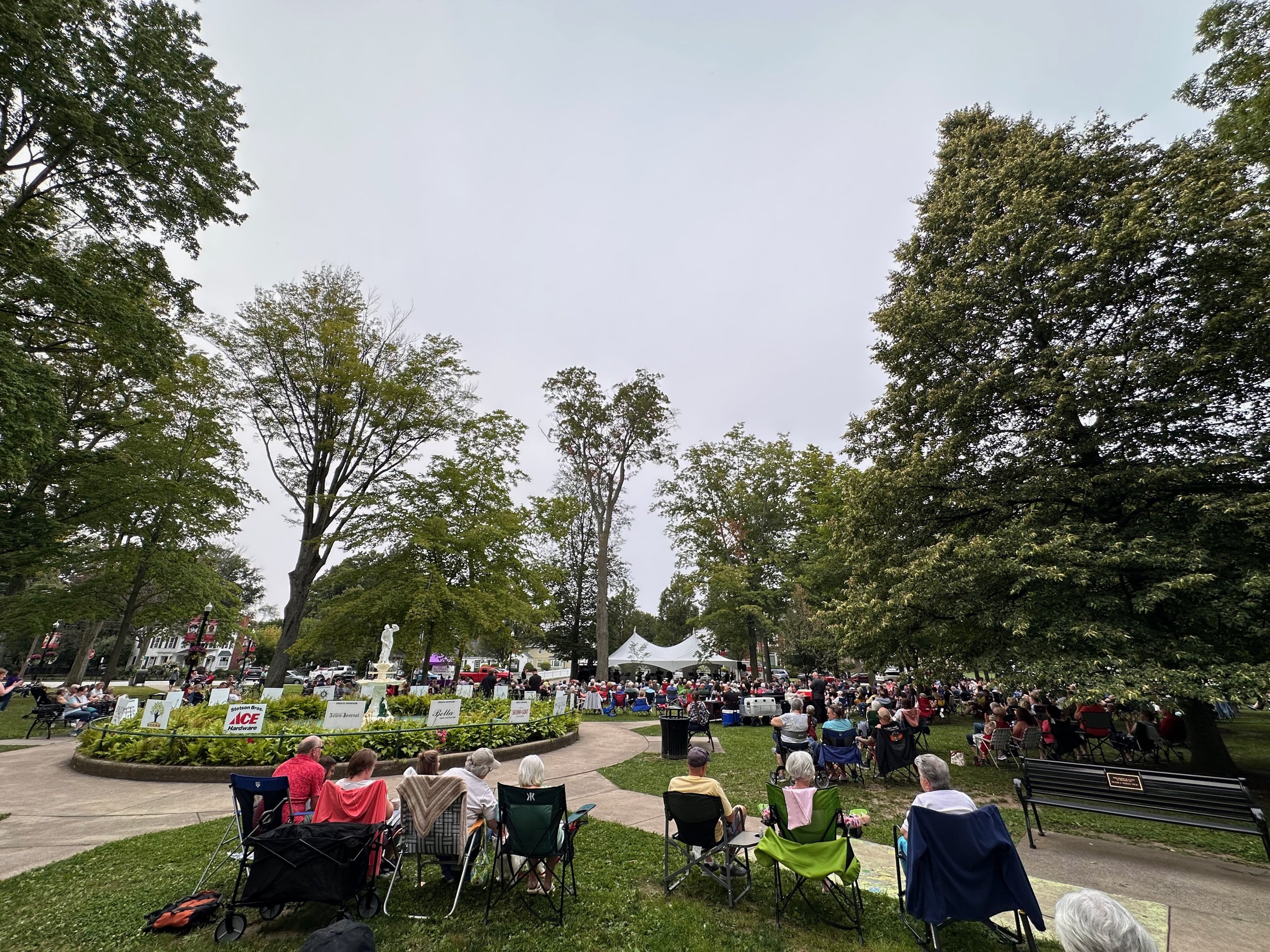A Fabulous Week of Music
From Ken Heinlein, Principal Tuba, Erie Philharmonic Orchestra; Conductor, Erie Philharmonic Brass Choir
This week, we are presenting our third annual tour of the Erie Philharmonic Brass Choir. Comprising the brass section of the Erie Philharmonic, these concerts allow us to present a special focus on the musicians who typically live in the back row of the orchestra, as well as some of the incredible music written for the ensemble. As a part of the “In Your Hometown” tours that the Erie Philharmonic puts on each year, we travel near and far to present this music both in the city of Erie and throughout NW Pennsylvania.
My role in these concerts is something far outside my traditional comfort zone. Within the Erie Philharmonic, my job is relatively simple: Principal Tuba. It’s a job I’m very proud to hold, and one which is more than enough to occupy my time. In late 2019, however, I approached the Erie Philharmonic with an idea for a concert of brass and percussion music.
The music for this instrumentation is vast and deep, and the sound of a choir of brass instruments is nothing less than extraordinary. Traditionally in a more musically “supporting” role, musicians in this ensemble are able to “spread their (melodic) wings” fully carry the musical weight of a successful performance. Hoping it would make the idea more appealing, and having worked with collegiate brass choirs in the past, I offered to conduct the ensemble—which the Erie Philharmonic graciously took me up on.
Each year, planning for the upcoming late summer concerts begins in April. Through the year, I keep a running list of pieces that might work well for our concerts, and in consultation with the Erie Philharmonic, we purchase and commission the various pieces needed to create a successful concert. For an outdoor summer concert, the pieces we play tend to be about three to five minutes in length, so we play a lot of different tunes—twelve this year in total! As a consequence, a great deal of thought must be given to the breadth and flow of music we present to the audience; at the same time, I always want to keep the experience of playing the music in mind, to make sure the musicians are given adequate rotation and rest to allow for the most successful conditions for performance possible.
Once all the music is together and part rotations are assigned, the library gets to work. Unlike a traditional concert, where individual pieces are sent out in a folder, the library copies everything together into a single bound book for each performer. All dozen pieces are together and in one place, keeping everything as simple as possible. Similarly, the scores for the entire program are bound in order, allowing me ease of reading and conducting throughout the process.
This is where the next phase of my work begins. My preparation shifts from that of cultivating a large concert experience to the more concrete work of preparing to be a conductor. Forms must be understood and marked. Chords must be analyzed and labeled. Cues must be noted, and tempi must be set and written in. The physical score transforms from a simple and generic black and white document to one alive with color (literally – my favorite pen is green), marked and built for this moment—for my conducting this exact ensemble. I am practicing my conducting this entire time, as well as honing my musical ideas.
As rehearsal approaches, I start creating several companion documents, like a rehearsal plan and program notes. Drawing on my knowledge of both the scores and of brass playing, I look ahead to not only spot challenging passages but develop solutions to address them in rehearsals. This allows me to diffuse tricky parts before they become issues, fixing things even before our first full run-through of the music. Concurrently, I start generating a more detailed historical accounting of each piece in its own musical context and what impact it had in its own time and beyond. Eventually, this document gets distilled all the way down to the program notes that I share with the audience between pieces at the concert itself.
Finally, the big day arrives, and we have our first rehearsal. My colleagues come into the rehearsal space and I welcome each of them and thank them for being there to play. The gravity of my responsibility starts to fully settle on me: these are my colleagues; they are my friends and I hold tremendous respect for them as musicians and performers. They have every right to expect the highest quality of conducting in front of them, and it’s my responsibility to provide that. I’m a conductor to serve them and to serve the music. I’m not the boss—I work FOR the musicians. I’m there to organize everything and make everyone’s lives simpler. I’m there to give my colleagues the space to be great musicians and play comfortably and with confidence.
Before I know it, rehearsals are over and it’s time for the concert. Any nerves I had are gone. I am buoyed by the privilege of standing in front of these brass players, excited to present this amazing music to the audience, and thrilled for the opportunity to speak to them and to share my joy with everyone who comes to see us.
Ken Heinlein
Principal Tuba, Erie Philharmonic Orchestra
Conductor, Erie Philharmonic Brass Choir






